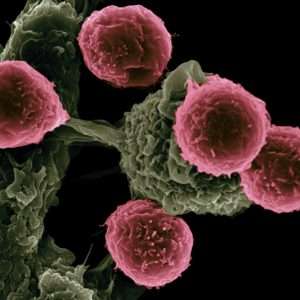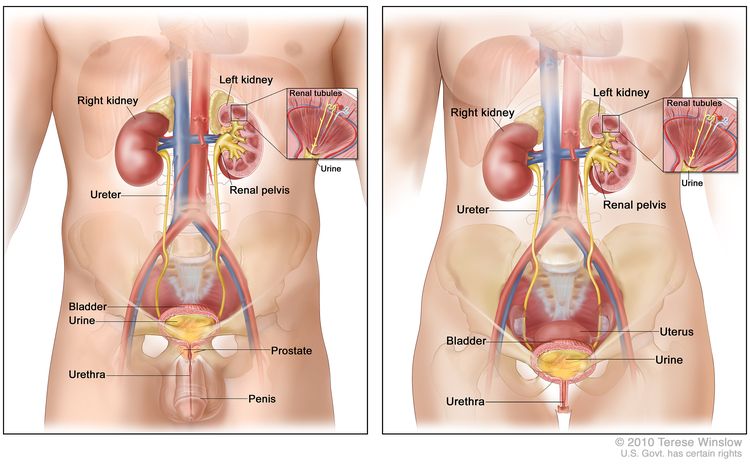In 2020, an estimated 1,806,590 new cases of cancer will be diagnosed in the United States and 606,520 people will die from the disease1. Cancer is the name given to a collection of related diseases. In all types of cancer, some of the body’s cells begin to divide without stopping and spread into surrounding tissues. This post ”Bladder Cancer: 5 Key Points” seeks to provide current and relevant information from a trusted source.
Many Black Americans feel that they are talked down to by the doctor and find that the whole healthcare experience is stressful. This reinforces the idea that African Americans believe they are treated badly by the healthcare profession. Local and state governments allocate few resources to improve the healthcare in their neighborhoods. COVID19 has made the situation worse. Jay Harold has a post “Talking to Doctor Presents Challenges for African Americans” that describes some of the obstacles to good healthcare Black Americans face.
Cancer can start almost anywhere in the human body, which is made up of trillions of cells2. Normally, human cells grow and divide to form new cells as the body needs them. When cells grow old or become damaged, they die, and new cells take their place.
Growths called Tumors may form
When cancer develops, however, this orderly process breaks down. As cells become more and more abnormal, old or damaged cells survive when they should die, and new cells form when they are not needed. These extra cells can divide without stopping and may form growths called tumors.
Many cancers form solid tumors, which are masses of tissue. Cancers of the blood, such as leukemias, generally do not form solid tumors.
Cancerous tumors are malignant, which means they can spread into, or invade nearby tissues. In addition, as these tumors grow, some cancer cells can break off and travel to distant places in the body through the blood or the lymph system and form new tumors far from the original tumor.
Unlike malignant tumors, benign tumors do not spread into, or invade nearby tissues. Benign tumors can sometimes be quite large, however. When removed, they usually don’t grow back, whereas malignant tumors sometimes do. Unlike most benign tumors elsewhere in the body, benign brain tumors can be life-threatening.
Statistics at a Glance: The Burden of Cancer in the United States1
- In 2020, an estimated 1,806,590 new cases of cancer will be diagnosed in the United States and 606,520 people will die from the disease.

- The most common cancers (listed in descending order according to estimated new cases in 2020) are breast cancer, lung and bronchus cancer, prostate cancer, colon and rectum cancer, melanoma of the skin, bladder cancer, non-Hodgkin lymphoma, kidney and renal pelvis cancer, endometrial cancer, leukemia, pancreatic cancer, thyroid cancer, and liver cancer.
- Prostate, lung, and colorectal cancers account for an estimated 43% of all cancers diagnosed in men in 2020. For women, the three most common cancers are breast, lung, and colorectal, and they will account for an estimated 50% of all new cancer diagnoses in women in 2020.
- The rate of new cases of cancer (cancer incidence) is 442.4 per 100,000 men and women per year (based on 2013–2017 cases).
- The cancer death rate (cancer mortality) is 158.3 per 100,000 men and women per year (based on 2013–2017 deaths).
More Stats:
- The cancer mortality rate is higher among men than women (189.5 per 100,000 men and 135.7 per 100,000 women). When comparing groups based on race/ethnicity and s
ex, cancer mortality is highest in African American men (227.3 per 100,000) and lowest in Asian/Pacific Islander women (85.6 per 100,000). - As of January 2019, there were an estimated 16.9 million cancer survivors in the United States. The number of cancer survivors is projected to increase to 22.2 million by 2030.
- Approximately 39.5% of men and women will be diagnosed with cancer at some point during their lifetimes (based on 2015–2017 data).
- In 2020, an estimated 16,850 children and adolescents ages 0 to 19 will be diagnosed with cancer, and 1,730 will die of the disease.
- Estimated national expenditures for cancer care in the United States in 2018 were $150.8 billion. In future years, costs are likely to increase as the population ages and more people have cancer. Costs are also likely to increase as new, and often more expensive, treatments are adopted as standards of care.
The most common type of bladder cancer is transitional cell carcinoma, also called urothelial carcinoma. Smoking is a major risk factor for bladder cancer. Bladder cancer is often diagnosed at an early stage.
General Information About Bladder Cancer3

KEY POINTS
- Bladder cancer is a disease in which malignant (cancer) cells form in the tissues of the bladder.
- Smoking can affect the risk of bladder cancer.
- Signs and symptoms of bladder cancer include blood in the urine and pain during urination.
- Tests that examine the urine and bladder are used to help diagnose bladder cancer.
- Certain factors affect prognosis (chance of recovery) and treatment options.
Bladder cancer is a disease in which malignant (cancer) cells form in the tissues of the bladder.
The bladder is a hollow organ in the lower part of the abdomen. It is shaped like a small balloon and has a muscular wall that allows it to get larger or smaller to store urine made by the kidneys. There are two kidneys, one on each side of the backbone, above the waist. Tiny tubules in the kidneys filter and clean the blood. They take out waste products and make urine. The urine passes from each kidney through a long tube called a ureter into the bladder. The bladder holds the urine until it passes through the urethra and leaves the body.

There are three types of bladder cancer that begin in cells in the lining of the bladder. These cancers are named for the type of cells that become malignant (cancerous):
- Transitional cell carcinoma: Cancer that begins in cells in the innermost tissue layer of the bladder. These cells are able to stretch when the bladder is full and shrink when it is emptied. Most bladder cancers begin in the transitional cells. Transitional cell carcinoma can be low-grade or high-grade:
- Low-grade transitional cell carcinoma often recurs (comes back) after treatment, but rarely spreads into the muscle layer of the bladder or to other parts of the body.
- High-grade transitional cell carcinoma often recurs (comes back) after treatment and often spreads into the muscle layer of the bladder, to other parts of the body, and to lymph nodes. Almost all deaths from bladder cancer are due to high-grade disease.
- Squamous cell carcinoma: Cancer that begins in squamous cells (thin, flat cells lining the inside of the bladder). Cancer may form after long-term infection or irritation.
- Adenocarcinoma: Cancer that begins in glandular cells that are found in the lining of the bladder. Glandular cells in the bladder make substances such as mucus. This is a very rare type of bladder cancer.
Cancer that is in the lining of the bladder is called superficial bladder cancer. Cancer that has spread through the lining of the bladder and invades the muscle wall of the bladder or has spread to nearby organs and lymph nodes is called invasive bladder cancer.
Smoking can affect the risk of bladder cancer.

Anything that increases your chance of getting a disease is called a risk factor. Having a risk factor does not mean that you will get cancer; not having risk factors doesn’t mean that you will not get cancer. Talk to your doctor if you think you may be at risk for bladder cancer.
Risk factors for bladder cancer include the following:
- Using tobacco, especially smoking cigarettes.
- Having a family history of bladder cancer.
- Having certain changes in the genes that are linked to bladder cancer.
- Being exposed to paints, dyes, metals, or petroleum products in the workplace.
- Past treatment with radiation therapy to the pelvis or with certain anticancer drugs, such as cyclophosphamide or ifosfamide.
- Taking Aristolochia fangchi, a Chinese herb.
- Drinking water from a well that has high levels of arsenic.
- Drinking water that has been treated with chlorine.
- Having a history of bladder infections, including bladder infections caused by Schistosoma haematobium.
- Using urinary catheters for a long time.
Older age is a risk factor for most cancers. The chance of getting cancer increases as you get older.
Signs and symptoms of bladder cancer include blood in the urine and pain during urination.

These and other signs and symptoms may be caused by bladder cancer or by other conditions. Check with your doctor if you have any of the following:
- Blood in the urine (slightly rusty to bright red in color).
- Frequent urination.
- Pain during urination.
- Lower back pain.
New ways to prevent cancer are being studied in clinical trials.
Information about clinical trials supported by NCI can be found on NCI’s clinical trials search webpage. Clinical trials supported by other organizations can be found on the ClinicalTrials.gov website.
Jay Harold hopes you enjoyed this post, “Bladder Cancer: 5 Key Points” Click this link to get free Health and Wealth information to improve your life. Please share it and read more about Jay Harold here. Please take this advice from Muhammad Ali and give it back to others. “Service to others is the rent you pay for your room here on earth.”
Bibliography
- https://www.cancer.gov/about-cancer/understanding/what-is-cancer
- https://www.cancer.gov/about-cancer/understanding/statistics#:~:text=The%20rate%20of%20new%20cases,on%202013%E2%80%932017%20deaths).
- https://www.cancer.gov/types/bladder/patient/bladder-treatment-pdq




